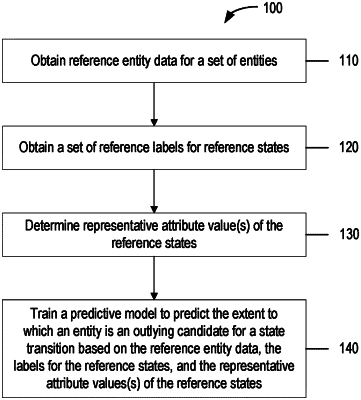| CPC G06F 18/2413 (2023.01) [G06F 16/9024 (2019.01); G06F 16/9035 (2019.01); G06F 17/18 (2013.01); G06F 18/2148 (2023.01); G06F 18/285 (2023.01); G06Q 10/1053 (2013.01)] | 20 Claims |

|
1. A computer-implemented method comprising:
obtaining profile data for a candidate entity;
identifying, based on the profile data, a first state associated with the candidate entity;
selecting a predictive model, comprising a neural network, trained to predict an extent to which an entity is qualified for a state transition from the first state to a second state, wherein the predictive model is trained by:
obtaining reference entity data indicating the first state and optionally the second state for each entity included in a first plurality of entities, and
indicating the second state and optionally the first state for each entity included in a second plurality of entities;
determining values of one or more representative attributes of the first and second states based on the reference entity data, and providing at least a portion of the reference entity data and the representative attribute values of the first and second states to a training module for the predictive model;
determining, based on the profile data, a status score of the candidate entity, the status score representing a status of the candidate entity when the entity inhabited the first state; and
using the predictive model to predict an extent to which the candidate entity is qualified for the state transition from the first state to the second based, at least in part, on the status score of the candidate entity.
|